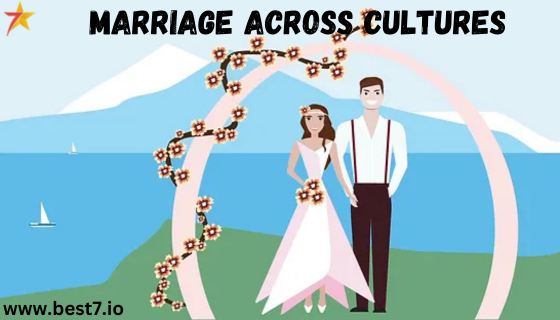
Marriage is one of the most common social institutions, yet it operates in an extensive set of practices and beliefs among various cultures. The contrasting practices, often rooted in historical and social contexts, contribute to the ways people approach individual commitment, family, and rituals.
As globalization and cultural exchanges continue, understanding the specific practices of marriage becomes vital. The future of marriage practices will largely be dominated by either the preservation of traditional practices or a mixture of intercultural norms.
Historical and Social Influences on Marriage Practices
The historical and social context of marriage practices drives the wide variations observed across different cultures. In many countries, marriage has been traditionally viewed as a form of communal or familial bonding. Furthermore, each social construct’s marriage practices are influenced by its predetermined social norms and economic status.
In India, for example, marriages are historically inclined to include the dowry practice. Furthermore, in India, marriage, often called “Vivaham,” presents intricate practices. Nowinski detailed such practices that focus on the union of two families, emphasizing dowry-based marriage traditions. An ethnographic study by the Indian Census Bureau in 2018 shows that 88% of Indian marriages are still based on parental arrangement. Nonetheless, an increasing number of young people are opting for partner-choice marriages.
The Shift Toward Individual Choice in Marriage
In India, a 20% decrease in arranged marriages is expected by 2040, although traditional customs, like wedding rituals, will likely endure. Future marriage patterns may incorporate elements of traditional customs, as family involvement remains important in many cultures. However, these patterns will increasingly focus on individual choice and personal dependency, diverging from current practices.
Cultural Beliefs and Their Role in Family and Relationships
Future social contexts around family and relationships will be shaped by essential cultural beliefs that influence human life in various ways. Cultural beliefs are closely intertwined with many life aspects as people adhere to these cultural standards. For instance, as U.S. immigration policies strengthen, the number of Indian-rooted families could increase, leading some families to return to India to preserve cultural traditions like arranged marriages.
The Rise of Intercultural Marriages and Blended Traditions
On the other hand, intercultural marriages, where partners belong to different cultures, are becoming more frequent. “Intercultural/interethnic marriages are generally on the rise in the United States: in 2015, 17% of all U.S. newlyweds had a spouse of a different race or ethnicity.” The number of such marriages is expected to increase as migration flows and cultural exchanges expand. By 2035, ceremonies in approximately 25% of intercultural marriages will include elements of wedding rituals from both cultures, leading to the emergence of multicultural marriage traditions.
The Symbolism of Marriage and Diverse Cultural Practices
Wedding traditions and marriage rituals vary significantly across cultures, often symbolizing marriage’s deeper meanings. Marriage rituals frequently serve to reinforce cultural values regarding family, community, and social status. Driven by this diversity, each culture adds unique characteristics to marriage as a rite of passage. For example, Japan’s Shinto wedding rituals underscore marriage’s spiritual and communal aspects.
Shinto Wedding Rituals: Tradition in Japanese Marriages
Several rituals in the Shinto wedding ceremony highlight the spiritual and communal aspects of marriage. The couple exchanges nuptial cups in a ritual called “san-san-kudo,” symbolizing the joining of families and the spiritual bond between the couple. Approximately 72% of marriages in Japan incorporate these elements of a Shinto wedding, though Western-style weddings are becoming more popular.
Transforming Traditional Practices Through Globalization
As globalization advances, traditional marriage rituals will likely continue to exist across cultures. By 2040, it’s estimated that 70% of countries with strong cultural traditions, such as India and Japan, will still practice historical customs. However, these traditions may gradually adapt to modern perspectives, merging with global cultural elements.
Changing Family Structures and Cultural Beliefs
Due to changing cultural beliefs surrounding marriage, family structures are becoming more varied. By 2030, 40% of family structures in Western countries may be non-traditional, including cohabiting couples and single parents. This shift reflects evolving cultural attitudes toward marriage and commitment.
Economic Globalization and Marriage Patterns
Economic globalization will remain a significant factor in shaping marriage patterns, especially in developing countries with growing access to education and employment. By 2045, these countries may increasingly delay marriage to prioritize economic stability in earlier life stages.
Marriage Equality and Its Cultural Impact
The progression of marriage equality across the globe will also influence marriage practices. By 2040, an estimated 15 more countries may allow same-sex marriage, leading to broader family structures and transformed marriage traditions worldwide.
Social Media’s Influence on Marriage Trends
With the rise of social media, approximately 65% of marriages are anticipated to incorporate global trends by 2035. This influence is expected to reshape traditional marriage practices across the globe as couples increasingly seek inspiration from online platforms.
Embracing Cultural Diversity in Marriage Practices
Global cultural references are expected to play an increasingly prominent role, with hybrid marriage customs becoming common in approximately 30% of societies by 2040. These changes illustrate how marriage will evolve through globalization, intercultural interactions, and economic influences, leading to a more inclusive understanding of marriage across diverse cultural contexts.












